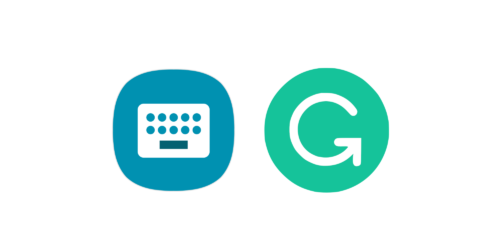Support Class Learning Activities with AI
GenAI can assist with modelling, guiding, and supporting the learning process in your classroom. Learn about two different approaches to using genAI to support learning activities in your classroom.
Professor-Guided Teaching Tool
Ask students to “do more” with genAI outputs. This approach uses genAI as an “answer tool.” Then, in a worked example led by you, in small groups, or alone, students “do more” with the output: they can compare, critique, or extend the outputs using their own human capabilities. See below for sample activities and instructions.
Important note: In these examples, faculty provide the genAI outputs to students. This recommended practice enables students to learn about, with genAI without requiring them to use non-protected 3rd party chatbots.
| Use in active learning | Area/Topic | Sample starter instructions |
|---|---|---|
| Identify the errors, inaccuracies, bias, or limitations of the genAI output | PSW | “In today’s class, I will provide a scenario with a fictional patient’s data. Then, I will share Copilot’s analysis of that data with you. Your task is to identify errors or inaccuracies in the AI’s output and discuss its limitations in analyzing patient data.” |
| Compare the genAI output to human judgments and decisions | Marketing | “In small groups, you will predict a customer’s behaviour based on past purchases. Then, as a class, we will use Copilot to predict customer behaviour based on past purchases. Finally, we will compare the AI’s predictions with our judgments and decisions.” |
| Assess genAI’s limited ability to predict | Supply Chain | “We will use an AI tool to forecast future supply chain trends. As a class, we will ask my version of Copilot about these trends, then discuss the AI’s ability to predict these trends accurately.” |
| Discuss the ethical, legal, or economic implications of using AI in various real-world situations | Interior Design | “We will consider how AI to create models of spaces. We will also discuss what can happen when we don’t review AI-generated models carefully before showing them to clients.” |
| Enhance the output | Technical Writing | “In today’s class, I will provide you with a section of a technical manual. Your task is to improve or enhance the output for a different audience or mode of delivery. You can also suggest accompanying figures.” |
| Add to the output | Computer Science | “We will add to AI-generated code. I will provide you with an AI-generated Python snippet, and you will add a simple text-based user interface, which gen-AI is not as good at creating. Finally, we will discuss the approaches you took.” |
Student-Guided Learning Tool
A second way for students to use genAI is for practice and support. This approach uses AI as a “learning tool” rather than an answer tool. By providing detailed instructions for the genAI to act and respond in certain ways, GenAI can be used as a tutoring and self-guided active learning tool. (Mollick & Mollick, 2022). In this “reverse prompting” mode, genAI can give practice opportunities and supports but not direct answers.
Important note: Students must have access to safe and secure genAI tools and detailed prompts for this type of student-centred learning in the classroom.
- Personalized tutoring: generate questions based on a given text, helping students test their understanding of the material.
- Automated Feedback: provide instant feedback on student work, such as marketing plans or ad campaigns.
- Conversation Partner: simulate different roles in a supply chain, allowing students to practice negotiation or problem-solving skills.
- Practice Interviewer: provide a practice scenario in which students answer questions as they prepare for a job interview in interior design.
- Team Support: contribute to group projects, generate ideas, provide feedback, or help with tracking tasks.
Check out these activities for using AI to support active learning in your classroom: Active Learning with AI.
Risks and Ethical Considerations
While genAI offers numerous benefits, there are also ethical considerations for using AI in class activities, which might be discussed with students in class (Paul R MacPherson Institute, 2023). See the list of issues below, which includes starter scripts you can modify and expand.
Key issues to address with students
Hallucinations: “AI, especially generative AI, can sometimes produce outputs that seem real or plausible but are not – these are known as hallucinations. This is a concern because it can lead to misinformation or misunderstanding. Always cross-verify the information generated by AI with reliable sources.”
AI Bias: “AI systems learn from the data they are trained on, and if that data contains biases, the AI can reproduce or even amplify those biases. This is a concern because it can lead to unfair outcomes or discrimination. Be critical of AI outputs and consider the potential biases that may have influenced them.”
Input and Output Copyright: “AI generates content based on the data it’s trained on, which can raise copyright issues. This is a concern because using copyrighted material without permission can lead to legal consequences. Always use AI responsibly and respect intellectual property rights.” See Copyright for Faculty and Staff for more information.
Student Privacy: “AI systems often need data to function effectively and in an educational setting, this data can include sensitive information about students. This is a concern because everyone has a right to privacy. Be mindful of the data you provide AI systems, especially personal identification information.”
Academic Integrity: “AI can generate content such as essays or code, which can be misused in when your own thinking or abilities are being assessed. This is a concern because academic integrity is a fundamental value in education. Use AI as a tool for learning and inspiration, not just as a shortcut. You are always responsible for the work you submit, even when you use AI.” See Academic Integrity for more information.
Equitable Access: “Not all students may have the same level of access to AI tools. This is a concern because education should be inclusive and equitable. If you have concerns or questions about using genAI technology in class for your learning, please reach out to me.”
As you ready? Let’s explore together how to leverage the capabilities–while recognizing the limitations–of AI in our pedagogy (Ng, 2021). Join the MS Teams conversation on Artificial Intelligence today!
Questions? Learn more about the evolving field of generative AI. Refer to the Evolving AI Guidelines for more information.
References
Ng, W., et al. (2021). AI literacy for educators. Journal of AI Education.
Lutkevich, B. (2023). The evolution of chatbots in education. TechEd Journal.
Mollick, E. R., & Mollick, L. (2023). Assigning AI: Seven Approaches for Students, with Prompts.
Paul R MacPherson Institute for Leadership, Innovation and Excellence in Teaching (2023). General limitations and risks. Generative artificial intelligence in teaching and learning at McMaster University.
As you ready? Let’s explore together how to leverage the capabilities–while recognizing the limitations–of AI in our pedagogy (Ng, 2021). Join the MS Teams conversation on Artificial Intelligence today!
Questions? Learn more about the evolving field of generative AI. Refer to the Evolving AI Guidelines for more information.



